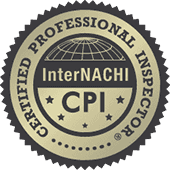|
|
4. Glossary of Terms
4.1. Accessible: Can be approached or entered by the inspector safely, without difficulty, fear or danger.
4.2. Activate: To turn on, supply power, or enable systems, equipment, or devices to become active by normal operating controls. Examples include turning on the gas or water supply valves to the fixtures and appliances, and activating electrical breakers or fuses.
4.3. Adversely Affect: To constitute, or potentially constitute, a negative or destructive impact.
4.4. Alarm System: Warning devices, installed or freestanding, including, but not limited to: carbon monoxide detectors, flue gas and other spillage detectors, security equipment, ejector pumps and smoke alarms.
4.5. Appliance: A household device operated by use of electricity or gas. Not included in this definition are components covered under central heating, central cooling or plumbing.
4.6. Architectural Service: Any practice involving the art and science of building design for construction of any structure or grouping of structures, and the use of space within and surrounding the structures or the design, design development, preparation of construction contract documents, and administration of the construction contract.
4.7. Component: A permanently installed or attached fixture, element or part of a system.
4.8. Condition: The visible and conspicuous state of being of an object.
4.9. Crawlspace: The area within the confines of the foundation and between the ground and the underside of the lowest floor structural component.
4.10. Decorative: Ornamental; not required for the operation of essential systems and components of a home.
4.11. Describe: To report in writing a system or component by its type, or other observed characteristics to distinguish it from other components used for the same purpose.
4.12. Determine: To arrive at an opinion or conclusion pursuant to examination.
4.13. Dismantle: To open, take apart or remove any component, device or piece that would not typically be opened, taken apart or removed by an ordinary occupant.
4.14. Engineering Service: Any professional service or creative work requiring engineering education, training, and experience and the application of special knowledge of the mathematical, physical and engineering sciences to such professional service or creative work as consultation, investigation, evaluation, planning, design and supervision of construction for the purpose of assuring compliance with the specifications and design, in conjunction with structures, buildings, machines, equipment, works or processes.
4.15. Enter: To go into an area to observe visible components.
4.16. Evaluate: To assess the systems, structures or components of a dwelling.
4.17. Examine: To visually look. See Inspect.
4.18. Foundation: The base upon which the structure or wall rests; usually masonry, concrete, or stone, and generally partially underground.
4.19. Function: The action for which an item, component, or system is specially fitted or used, or for which an item, component or system exists; to be in action or perform a task.
4.20. Functional: Performing, or able to perform, a function.
4.21. Home Inspection: The process by which an inspector visually examines the readily accessible systems and components of a home, and operates those systems and components utilizing these Standards of Practice as a guideline.
4.22. Household Appliances: Kitchen and laundry appliances, room air conditioners, and similar appliances.
4.23. Inspect: To visually look at readily accessible systems and components safely, using normal operating controls, and accessing readily accessible panels and areas in accordance with these Standards of Practice.
4.24. Inspected Property: The readily accessible areas of the buildings, site, items, components, and systems included in the inspection.
4.25. Inspector: One who performs a real estate inspection.
4.26. Installed: Attached or connected such that the installed item requires a tool for removal.
4.27. Material Defect: A condition of a residential real property or any portion of it that would have a significant adverse impact on the value of the real property or that involves an unreasonable risk to people on the property. The fact that a structural element, system or subsystem is near, at or beyond the end of the normal useful life of such a structural element, system or subsystem is not by itself a material defect.
4.28. Normal Operating Controls: Devices, such as thermostats, that would be operated by ordinary occupants which require no specialized skill or knowledge.
4.29. Observe: To see through visually directed attention.
4.30. Operate: To cause systems to function or turn on with normal operating controls.
4.31. Readily Accessible: An item or component that is, in the judgment of the inspector, capable of being safely observed without the removal of obstacles, detachment or disengagement of connecting or securing devices, or other unsafe or difficult procedures to gain access.
4.32. Recreational Facilities: Spas, saunas, steam baths, swimming pools, tennis courts, playground equipment, and other exercise, entertainment or athletic facilities.
4.33. Report: A written communication (possibly including images) of any material defects observed during the inspection.
4.34. Representative Number: A sufficient number to serve as a typical or characteristic example of the item(s) inspected.
4.35. Safety Glazing: Tempered glass, laminated glass, or rigid plastic.
4.36. Shut Down: Turned off, unplugged, inactive, not in service, not operational, etc.
4.37. Structural Component: A component which supports non-variable forces or weights (dead loads) and variable forces or weights (live loads).
4.38. System: An assembly of various components which function as a whole.
4.39. Technically Exhaustive: A comprehensive and detailed examination beyond the scope of a real estate home inspection which would involve or include, but would not be limited to: dismantling, specialized knowledge or training, special equipment, measurements, calculations, testing, research, analysis or other means.
4.40. Unsafe: A condition in a system or component which is judged to be a significant risk of personal injury during normal, day-to-day use. The risk may be due to damage, deterioration, improper installation, or a change in accepted residential construction standards.
4.41. Verify: To confirm or substantiate.
mation to act as a placeholder until the owner can put in real information.
San Diego County Home Inspection - Insight Home Inspections
Phone #: 858-248-7944 | Robert Zamba | [email protected]
10755 Scripps Poway Parkway, #464
San Diego, CA 92131
San Diego Home Inspection Company - Home Inspector San Diego
Privacy Policy | Inspection Agreement PDF | Pool/Spa Inspection Agreement | Nachi Standards of Practice | Terms & Conditions
Copyright © sdinsightinspections.com. All rights reserved.






